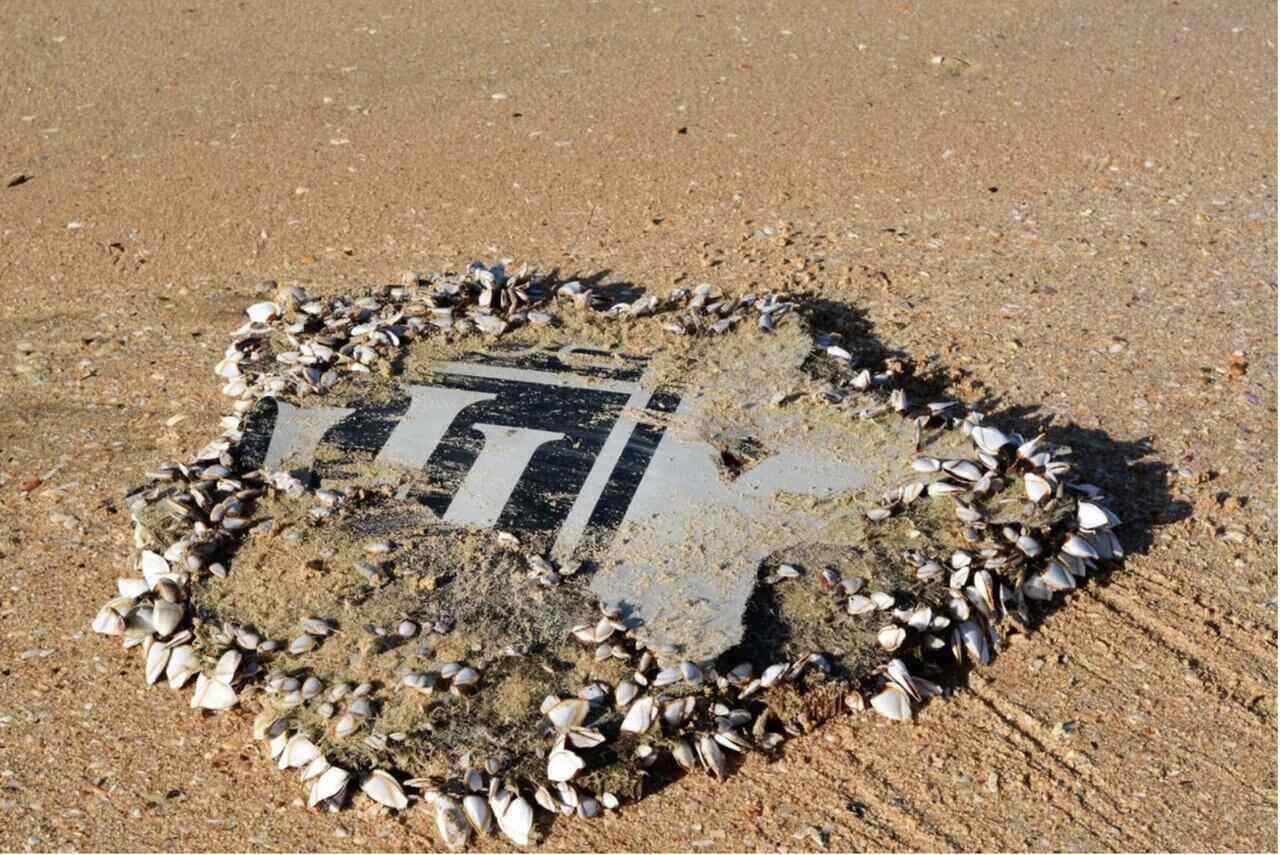Sau khi chuyến bay MH370 của Malaysia Airlines mất tích ngày 8.3.2014, trong vòng năm rưỡi đầu tiên, manh mối duy nhất là tập hợp các tín hiệu điện tử cho thấy máy bay rơi ở Ấn Độ Dương, khu vực phía tây Australia.
16 tháng sau, tháng 7.2015, mảnh cánh phụ (flaperon) bên phải của MH370 dạt vào bờ biển đảo Réunion của Pháp - bằng chứng vật lý cho thấy máy bay mất tích thực sự bay vào vùng biển phía nam.
Theo New York Magazine, mảnh vỡ MH370 này mang theo bằng chứng có thể giúp xác định vị trí của chiếc máy bay và giải quyết bí ẩn lớn nhất trong lịch sử hàng không hiện đại: Một quần thể hà ngỗng (gooseneck barnacle) Lepas anatifera.
Giống như vòng của thân cây, vỏ hà ngỗng Lepas có những ghi chép về cuộc đời chúng. Giải mã thông tin đó và lần lại theo đường đi của chúng trên mảnh cánh phụ MH370 để tới vị trí máy bay rơi và bí ẩn có thể được giải đáp.
Mảnh cánh phụ MH370 và Lepas trên mảnh vỡ đã thúc đẩy một thập kỷ nghiên cứu trên toàn thế giới. Vì Lepas có xu hướng xâm chiếm bất kỳ vật thể trôi nổi nào ở đại dương, những con hà ngỗng lâu đời nhất trên vật thể đó sẽ phản ánh tổng thời gian mà vật thể nằm ở đại dương.
Trong những năm sau khi phát hiện mảnh vỡ MH370, các nhà nghiên cứu đã nuôi hà ngỗng trong phòng thí nghiệm và trên phao trên biển. Các nhà khoa học phát hiện ra Lepas phát triển với tốc độ khác nhau và có kích cỡ khác nhau tùy thuộc vào nhiệt độ nước, lượng thức ăn.
Nhóm nghiên cứu cách Lepas phát triển trong vùng nước lạnh của dòng hải lưu Humboldt ngoài khơi Chile đã phát hiện ra rằng, sau 3 tháng, Lepas ngừng phát triển khi đạt chiều dài khoảng 20mm. Nghiên cứu khác ở vùng nước ấm hơn phía đông nam Australia nhận thấy Lepas lớn tới 48mm chỉ trong một tháng.

Năm 2020, Martin Stelfox - nhà sáng lập dự án Olive Ridley Project về bảo tồn rùa biển - cùng cộng sự công bố kết quả thí nghiệm nuôi Lepas trên phao ở Maldives. Sau 105 ngày tăng trưởng, lớp vỏ lớn nhất của Lepas là 35mm, gần với kích thước con hà lớn nhất trên mảnh cánh phụ MH370.
Vùng nước để nuôi hà ngỗng Lepas tương tự như vùng nước mà mảnh cánh phụ MH370 đã vượt qua để đến Réunion: Hải lưu Nam Xích đạo - dòng hải lưu chiếm ưu thế từ đông sang tây trải dài ở vĩ độ giữa miền bắc Australia và Madagascar.
Nghiên cứu gần nhất công bố năm 2023 của nhóm do nhà nghiên cứu Nasser Al-Qattan, Đại học Kuwait dẫn đầu phân tích lớp vỏ hà ngỗng do giới chức Pháp cung cấp.
Lớp vỏ của sinh vật này tương đối nhỏ, khoảng 25mm, có nghĩa là “chỉ vài tháng tuổi”. Thành phần hóa học của Lepas cho thấy sinh vật này phát triển ở vùng nước tương đối ấm, khoảng 27 độ C sau đó trôi vào vùng nước mát hơn, khoảng 24 độ C.
Các nhà nghiên cứu kết luận, dữ liệu cho thấy "cánh phụ MH370 có thể đã trải qua vài tháng cuối cùng ở phía tây kinh độ 70 độ kinh đông và trong phạm vi 1.500km tính từ Đảo Réunion”. Vị trí này cách khu vực tìm kiếm MH370 hơn 1.600km.
Nhìn chung, mẫu vật do Pháp chia sẻ còn quá non để nhóm nghiên cứu của nhà khoa học Al-Qattan lần lại theo đường đi của mảnh cánh phụ để trở lại địa điểm rơi của máy bay.
Được biết, giới chức Pháp đã thu hồi được những mẫu hà ngỗng lớn hơn từ cánh phụ MH370, với mẫu lớn nhất đường kính 36mm, nhưng chưa thể chia sẻ cho các nhà nghiên cứu bên ngoài.
Nhóm của ông Al-Qattan lưu ý: “Chỉ có thể tái tạo lại một phần trôi dạt cho đến khi những con hà lớn nhất, lâu đời nhất được Chính phủ Pháp công khai cho nghiên cứu”.
Tuy nhiên, New York Magazine chỉ ra, nhiều dữ liệu cho thấy, những con hà ngỗng 36mm từ mảnh vỡ MH370 được trao cho các nhà khoa học nghiên cứu cũng không đủ để lần lại vị trí máy bay rơi. Và bí ẩn này cũng chỉ là một phần trong hàng loạt nghịch lý liên quan đến sự biến mất của MH370.








